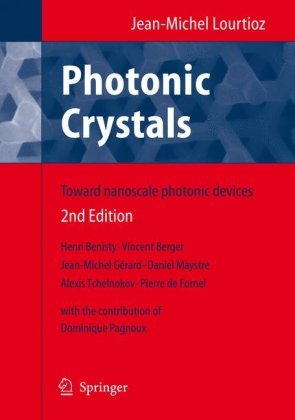

Most ebook files are in PDF format, so you can easily read them using various software such as Foxit Reader or directly on the Google Chrome browser.
Some ebook files are released by publishers in other formats such as .awz, .mobi, .epub, .fb2, etc. You may need to install specific software to read these formats on mobile/PC, such as Calibre.
Please read the tutorial at this link: https://ebookbell.com/faq
We offer FREE conversion to the popular formats you request; however, this may take some time. Therefore, right after payment, please email us, and we will try to provide the service as quickly as possible.
For some exceptional file formats or broken links (if any), please refrain from opening any disputes. Instead, email us first, and we will try to assist within a maximum of 6 hours.
EbookBell Team

4.3
8 reviewsJust like the periodical crystalline potential in solid state crystals determines their properties for the conduction of electrons, the periodical structuring of photonic crystals leads to envisioning the possibility of achieving a control of the photon flux in dielectric and metallic materials.
The use of photonic crystals as cages for storing, filtering or guiding light at the wavelength scale paves the way to the realization of optical and optoelectronic devices with ultimate properties and dimensions. This will contribute towards meeting the demands for greater miniaturization imposed by the processing of an ever increasing number of data.
Photonic Crystals will provide students and researchers from different fields with the theoretical background required for modelling photonic crystals and their optical properties, while at the same time presenting the large variety of devices, ranging from optics to microwaves, where photonic crystals have found application. As such, it aims at building bridges between optics, electromagnetism and solid state physics.
Photonic Crystals was written by six specialists of nanophotonics, with the contribution of a specialist in optical fibres. This second edition was prepared to include the most recent developments of two-dimensional photonic crystal devices, as well as some of the last results reported on metamaterials. The work was coordinated by Jean-Michel Lourtioz, head of the Institut d'Électronique Fondamentale in Orsay.